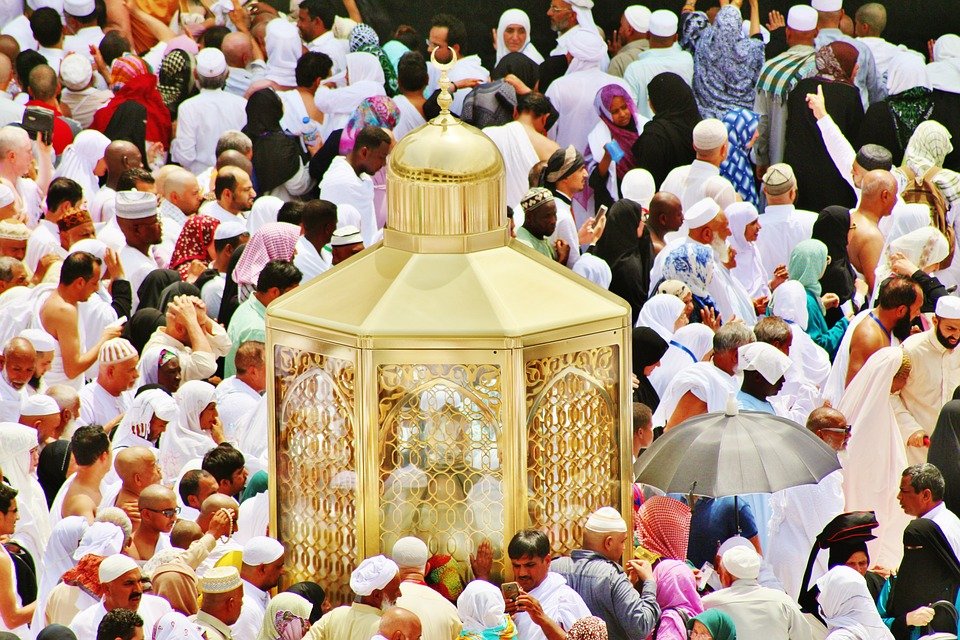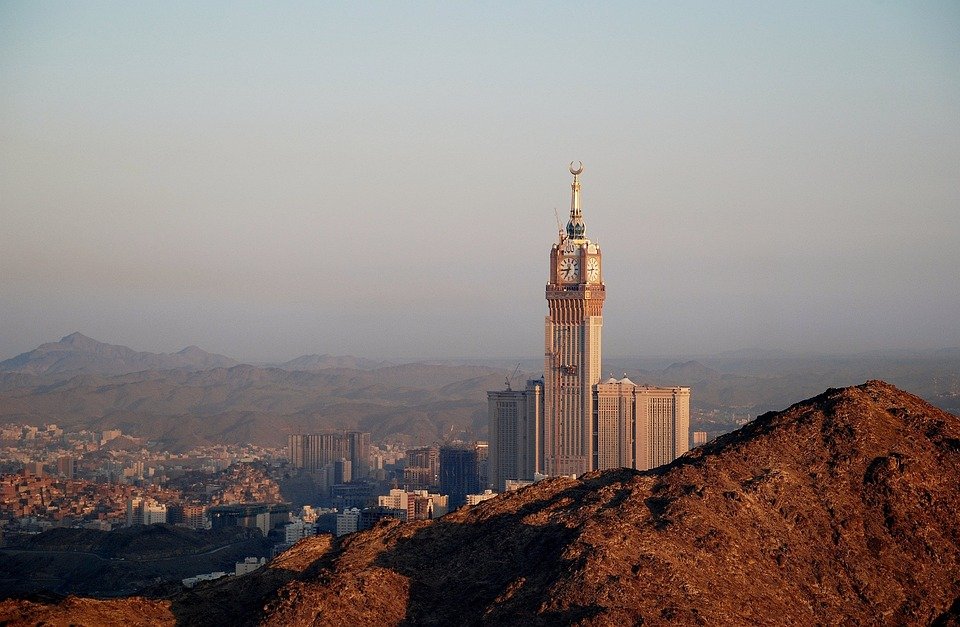You are here to read: What Does Jamarat Represent in Hajj: Meaning and Significance – A Thoughtfully Written Guide Offering Spiritual Wisdom and Travel Advice for Every Pilgrim who is going on holy journey of Hajj or Umrah.
In the context of Hajj, understanding what does jamarat represent is crucial for every pilgrim. The jamarat consists of three pillars symbolizing the rejection of evil and temptation, making it an essential part of the Hajj experience. In this article, we will explore what does jamarat represent in Hajj, providing you with an informative guide that sheds light on its significance and the ritual’s deeper meanings. I believe that grasping this concept enhances one’s spiritual journey and helps foster a more profound connection to the rites of Hajj.
The importance of what does jamarat represent in Hajj cannot be overstated. It serves as a powerful reminder of the trials faced by Prophet Ibrahim and his unwavering commitment to faith. Each pebble thrown at the pillars signifies the believer’s rejection of sin and temptation, reinforcing the spiritual resolve required during this sacred pilgrimage. With over nine years of experience in Umrah and Makkah travel since 2016, our team at Airlinkhajjandumrah.com is well-equipped to provide you with comprehensive insights on “What Does Jamarat Represent in Hajj: Meaning and Significance.” We aim to guide you thoughtfully, ensuring a fulfilling and enriching experience as you engage with this transformative act of worship.
Understanding Jamarat: What Is It?
Jamarat is an important symbol during the Hajj pilgrimage. It represents a significant moment where pilgrims perform a ritual steeped in history and meaning. Located in Mina, just outside Mecca, Jamarat consists of three large stone pillars. Each pillar signifies a different temptation that the Prophet Ibrahim faced. These temptations came from the devil, trying to dissuade him from obeying God. That’s why pilgrims throw pebbles at these pillars during Hajj, showcasing their defiance against evil and their commitment to faith.
Every year, millions of pilgrims gather at Jamarat to participate in this ritual. It’s not just about throwing stones; it embodies a deeper meaning of resisting negativity and wrongdoing. This act encourages us to focus on our spiritual journey, reminding us to stay true to our beliefs. By throwing these stones at Jamarat, we symbolize our intention to cast away worldly distractions and negativity. This ritual connects us to Ibrahim’s story, enriching our understanding of faith and submission to God’s will.
The Historical Significance of Jamarat
The history of Jamarat goes back centuries, rooted in the story of Prophet Ibrahim. According to Islamic tradition, Ibrahim faced three temptations from the devil, who tried to steer him from undertaking God’s command to sacrifice his son, Ismail. Each time Ibrahim resisted, he cast stones at the devil, symbolizing his unwavering loyalty to God. This act of defiance became a timeless tradition, thereby making the Jamarat a pivotal site during Hajj.
As pilgrims reenact Ibrahim’s experience, they connect with the concept of inner strength and resilience. This historical act reminds us that even in moments of doubt, faith can triumph over temptation. The significance of Jamarat has been preserved over generations, shaping the spiritual landscape of Hajj. Stressing its historical importance enriches the overall pilgrimage experience, turning it from a mere ritual into a profound connection with Islamic heritage.
The Ritual of Rami al-Jamarat
Rami al-Jamarat, or the stoning of the devils, occurs on specific days during Hajj. Pilgrims gather at the Jamarat site to throw pebbles at the three pillars. This activity takes place during the days of Eid al-Adha and the days following. Pilgrims typically pick up small stones before advancing to the pillars. They focus on their intentions, hoping to cleanse themselves of sins and doubts as they throw each stone.
You're at the middle of this awesome post at AirlinkHajjandUmrah.com through: What Does Jamarat Represent in Hajj: Meaning and Significance. Keep reading, it gets better!
This act is not just physical; it carries a spiritual weight. Each stone represents a commitment to resist temptation and live a life faithful to God. By participating in Rami al-Jamarat, pilgrims seek forgiveness and strength. This ritual allows us to confront our shortcomings, fostering a sense of community as we perform this act in unison. The collective energy of so many believers enhances the experience, making it even more profound.
The Community Aspect of Jamarat
The Jamarat stoning ritual unites millions of Muslims from around the world. Regardless of our backgrounds and cultures, we all come together with a shared purpose during Hajj. This sense of community strengthens us, as we encourage one another to uphold our beliefs. Standing shoulder to shoulder, we become part of something larger than ourselves. This unity enriches our experience, reminding us that we are not alone in our spiritual journey.
Moreover, the diverse atmosphere at Jamarat fosters understanding and acceptance. Pilgrims share stories, celebrate festivals, and support each other during this significant time. This interaction builds bonds that transcend language barriers, allowing us to learn from one another. In that moment, we witness the essence of our faith and the compassion it inspires.
Practical Tips for Pilgrims Visiting Jamarat
If you plan to visit Jamarat during Hajj, being prepared can enhance your experience. First, it’s vital to stay aware of the schedule for the Rami al-Jamarat. The days may be busy, so understanding when to throw your stones can help you avoid large crowds. Additionally, carrying enough small pebbles is essential. Often, pilgrims pick up stones before arriving, ensuring they don’t run out during the ritual.
Dress comfortably and wear appropriate footwear, as you may need to walk a distance. Stay hydrated and ensure you have your essentials close by. It’s easy to get overwhelmed by the number of people, so having a plan can alleviate stress. Remember to focus on the spiritual significance of the ritual, taking time to reflect as you participate. This mindful approach helps you maximize your connection with the Jamarat experience.
The Spiritual Lessons from Jamarat
Jamarat teaches us various spiritual lessons that can resonate even beyond the pilgrimage. The act of throwing stones reminds us of the importance of resisting temptation. Everyday life also presents countless distractions and challenges, and learning to stand firm can make a significant difference. Embracing this lesson can guide us to make better choices, whether in our personal or spiritual lives.
Additionally, Jamarat inspires us to be mindful of our intentions. Every action we take carries weight, and assessing our motivations can lead to greater personal growth. This practice encourages us to foster integrity and honesty in our daily lives. When we commit to aligning our actions with our values, we become not just better individuals but also a positive force in our communities.
Conclusion: Embracing the Significance of Jamarat
In conclusion, Jamarat represents much more than a mere ritual during Hajj. It embodies the struggles of faith, the triumph over temptation, and the spirit of community among pilgrims. As we engage in this important act, we deepen our understanding of ourselves and our relationship with the divine. The lessons learned at Jamarat can be carried back into our everyday lives, guiding us in our thoughts and actions.
The beauty of Jamarat transcends time and space, linking us with the legacy of Prophet Ibrahim. This ritual invites us to take a moment to reflect, resist negativity, and reaffirm our commitment to faith. Whether you are a seasoned pilgrim or a newcomer, the experience is one of unity and inspiration. Engaging meaningfully with Jamarat enriches the pilgrimage, reminding us of the powerful connection between past, present, and future in our spiritual journey.
That wraps up What Does Jamarat Represent in Hajj: Meaning and Significance. Thanks for sticking with us till here! Share this: What Does Jamarat Represent in Hajj: Meaning and Significance with your friends.
Check our homepage at Air Link Hajj & Umrah for more awesome updates.
Some interesting posts are: 1: Umrah Mubarak, 2: When is Umrah closed 2026?, 3: When does Umrah start after Hajj 2026?
Mushu, an experienced Saudi Arabia traveler and writer, shares insightful tips and spiritual reflections to enhance Hajj and Umrah journeys for fellow pilgrims. He has been to Makkah and Madina from 2016 to 2023 many times and his posts will reflect this.







